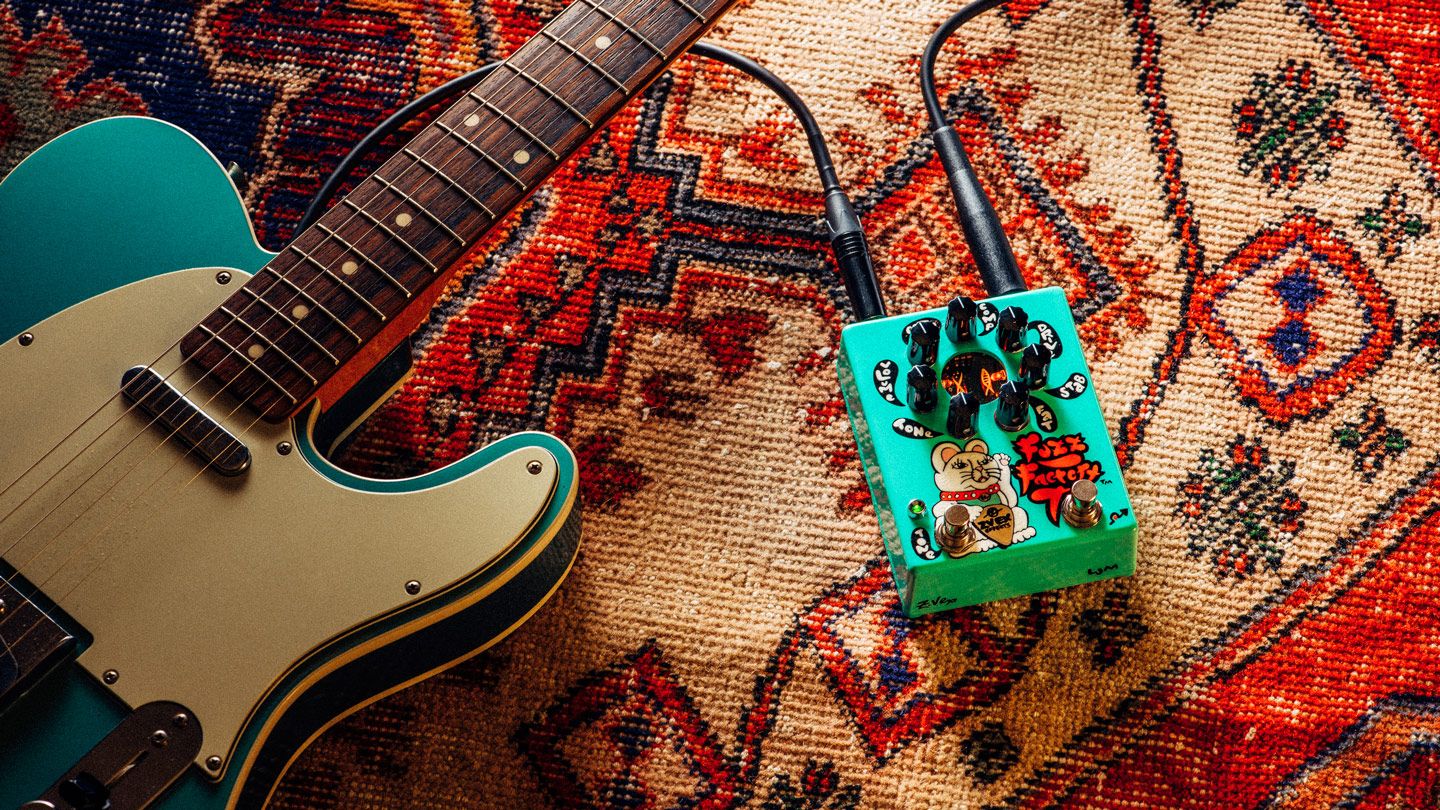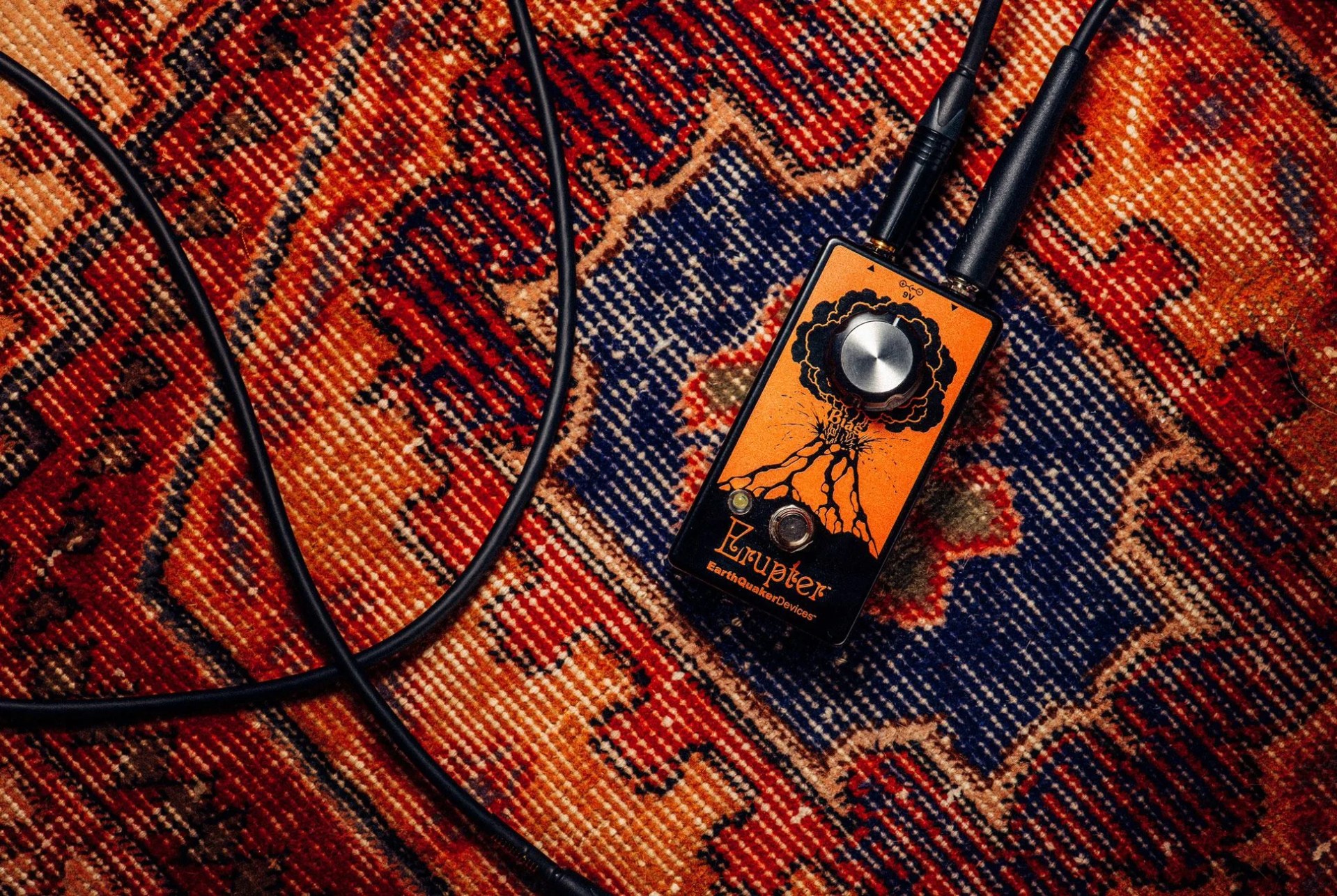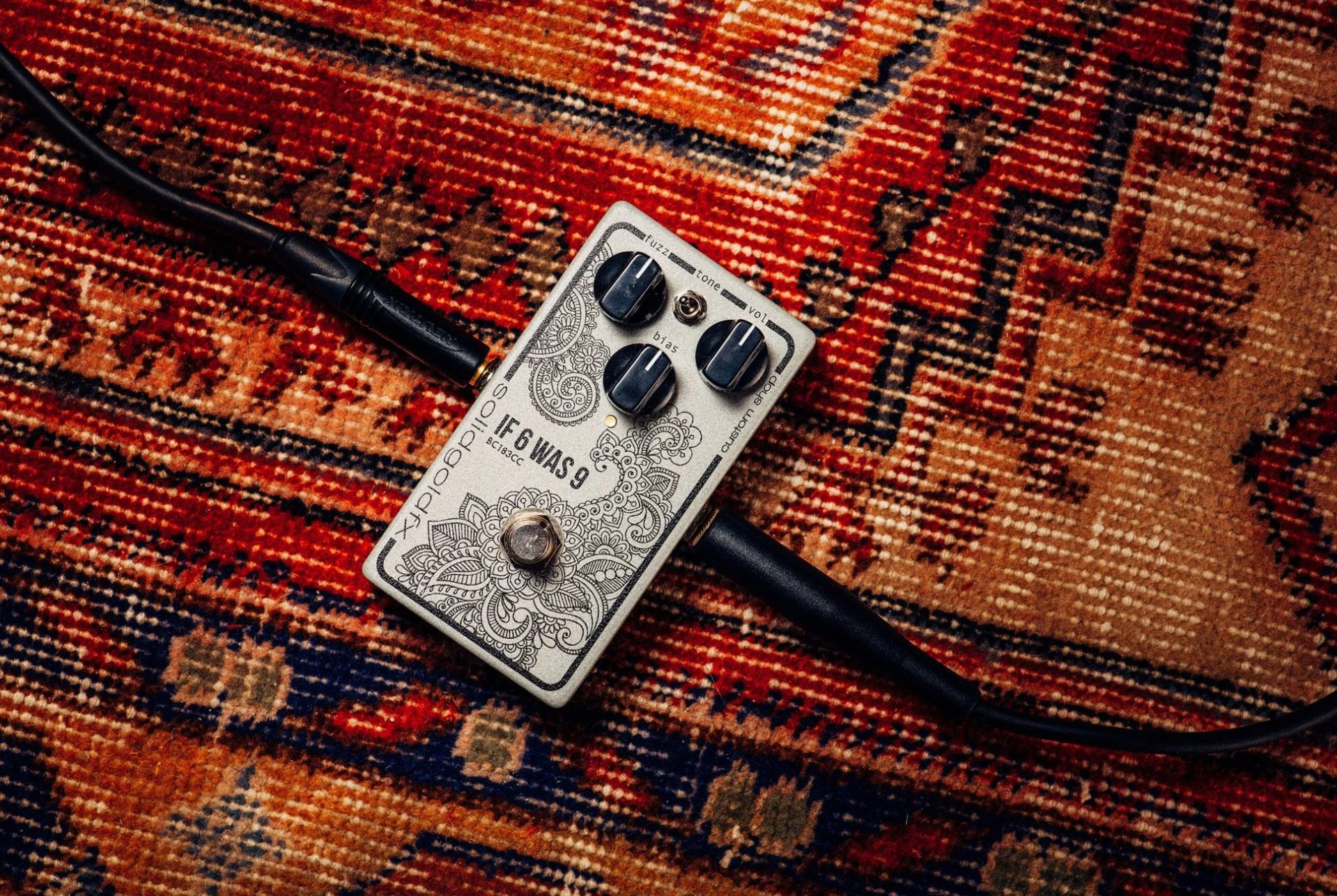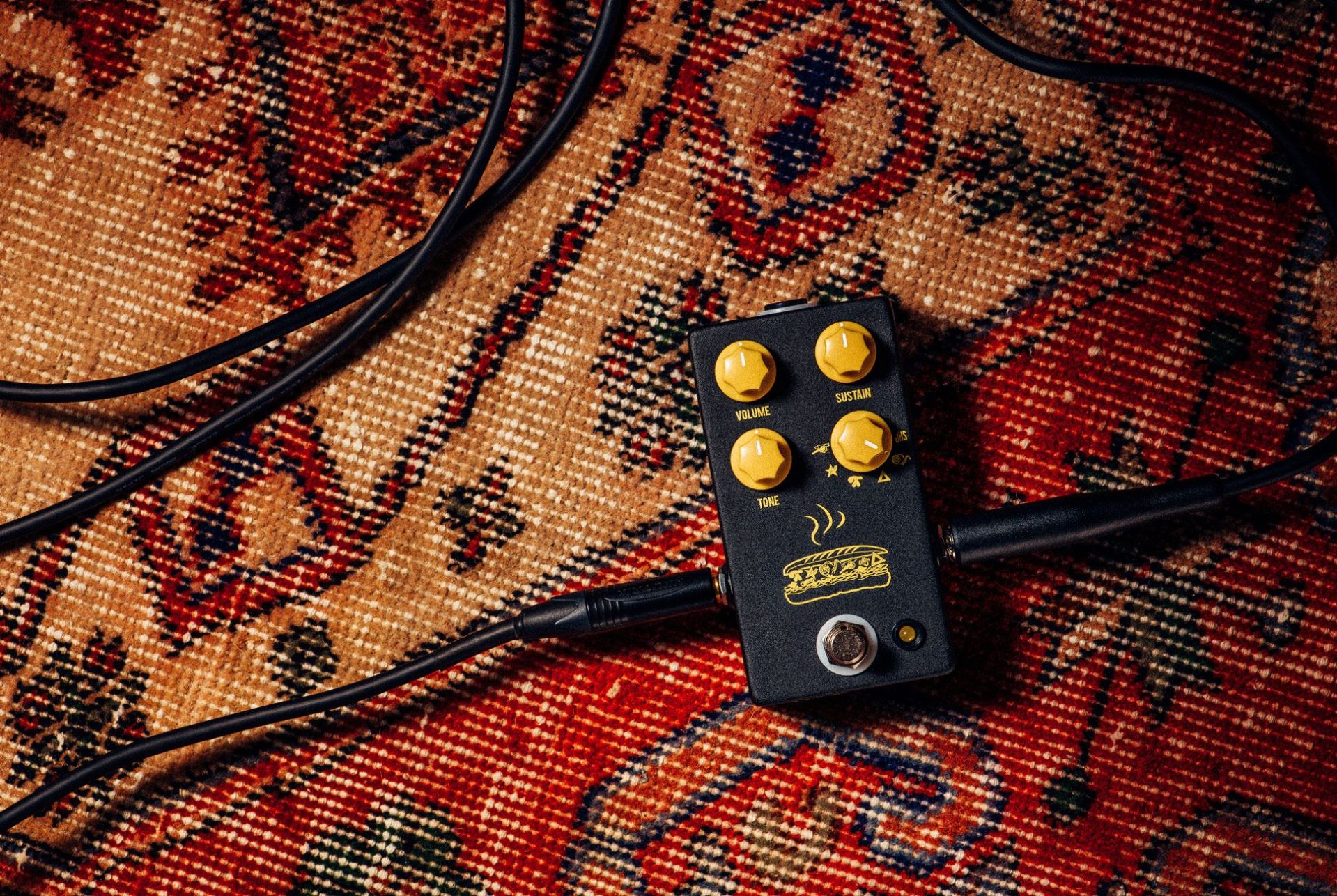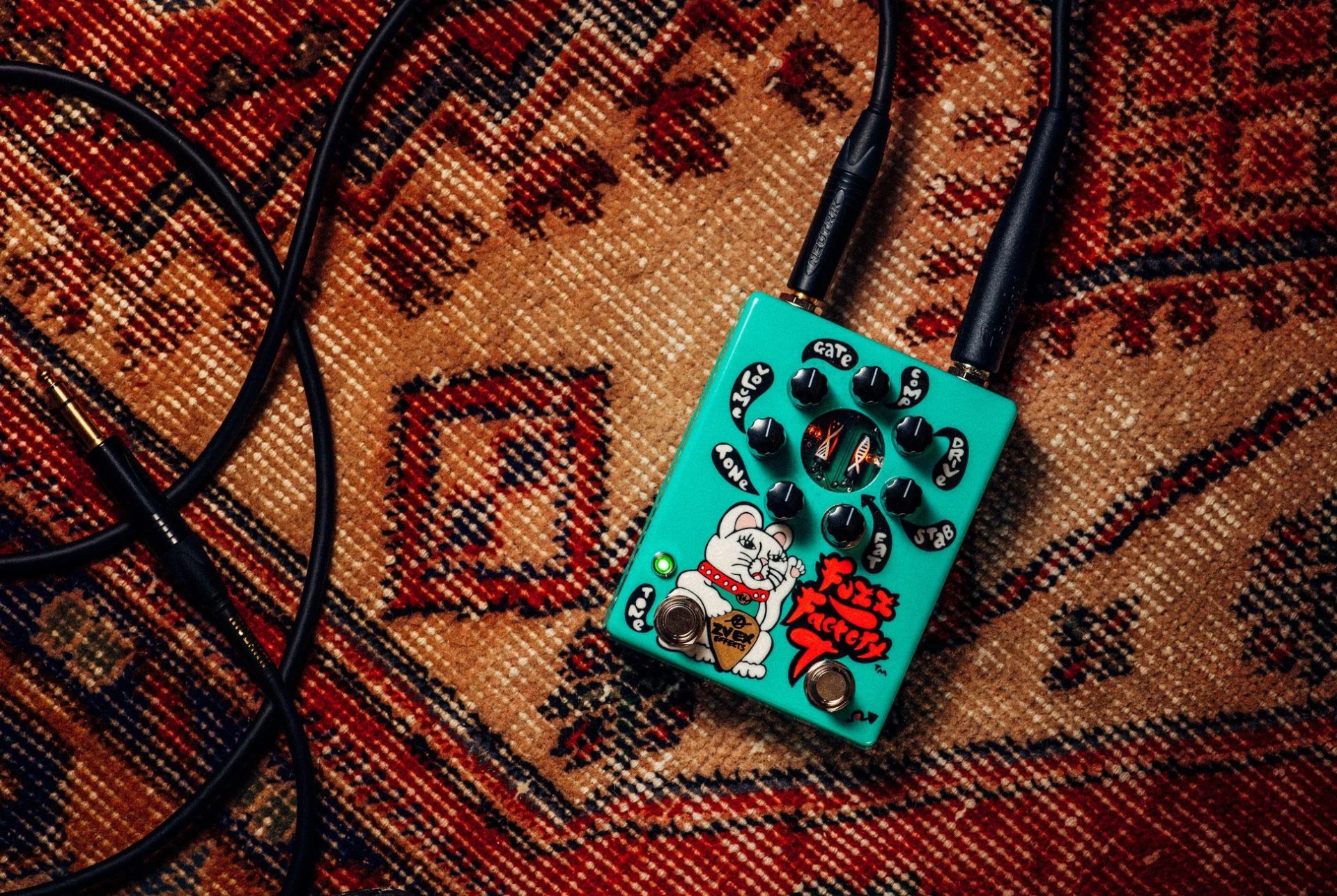Some of the most recognizable guitar sounds in rock music were created with the fuzz pedal. The predecessor of distortion and overdrive pedals, it alters your guitar’s sound wave into a square wave, producing a fuzzy sound made up of a multitude of complex overtones. Conceived in ‘60s, the fuzz pedal was used on countless classic rock albums, and has since found a place on pedalboards of guitarists in almost every genre.
From a technical standpoint, fuzz pedals are relatively easy to build so numerous pedal makers offer some variation of a fuzz. Technical innovations haven’t changed that much in half a century and component selection and construction create the contrast between brands. Unlike the tempered and regulated sounds of distortion and overdrive pedals, the square waves produced by fuzz pedals can create everything from uncontrolled noise to a responsive gradation of coruscation. In every pedal, there’s potential to experiment and find a unique tone that spurs your own creativity. To start you on the path to your own fuzz sound, we rounded up five of the best boutique pedals available today. They each offer a wildly different perspective, so read up on the differences below before investing in the right fuzz pedal for your style.
Black Arts Toneworks Tres Diablos Ruidosos
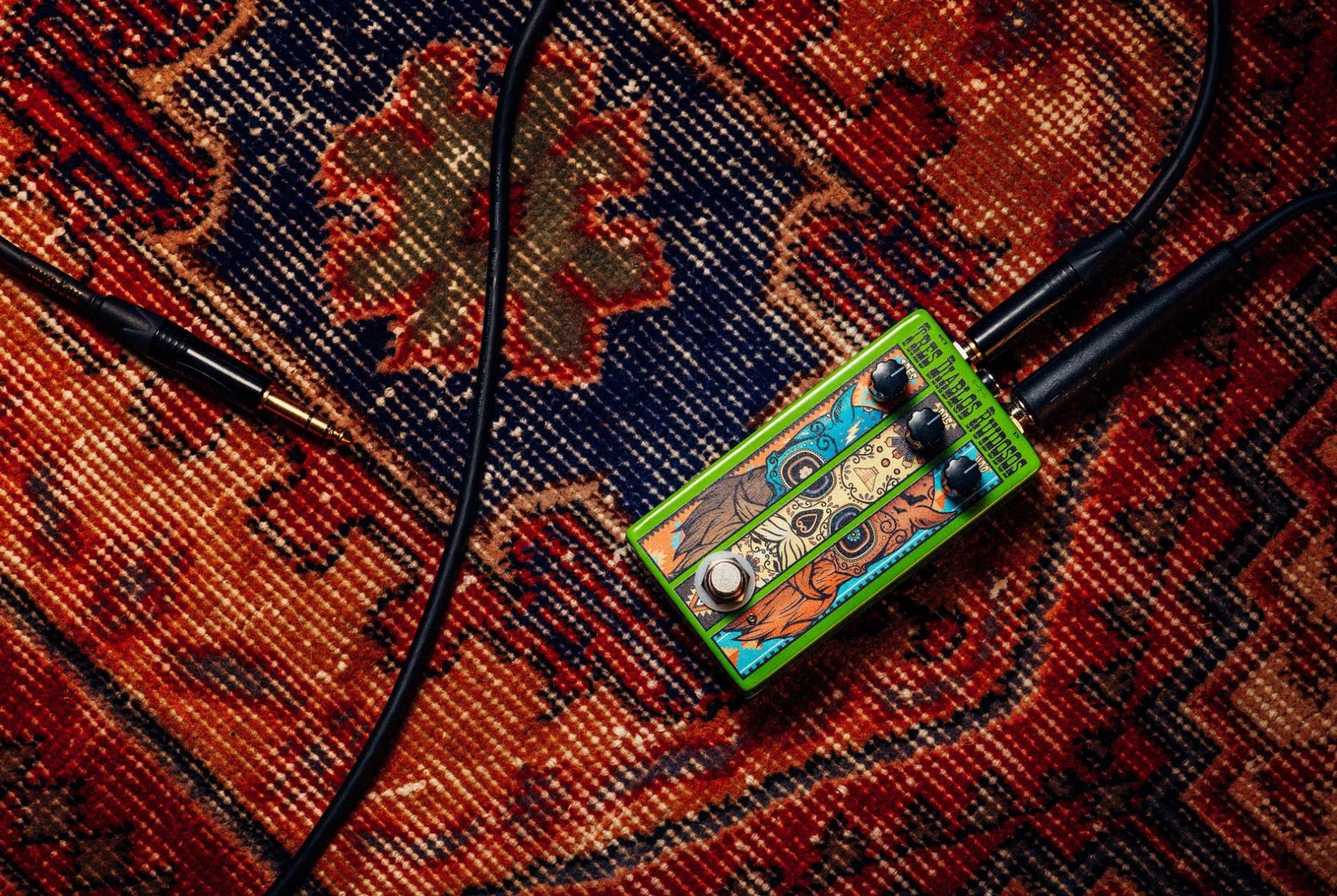
The inspiration for the pedal came from Billy Gibbons’ guitar tone on ZZ Top’s 1973 record Tres Hombres. The pedal has a unique build that features three cascading gainstages. Three master volume knobs of the face of the pedal allow for endless amounts of tweaking, ranging from a minimal warm boost to a gritty overdriven sound to crunchy, saturated metal tones. The pedal responds well when you dial back your guitar’s volume, making for a dynamic pedal that’s ridiculously fun to play through.
